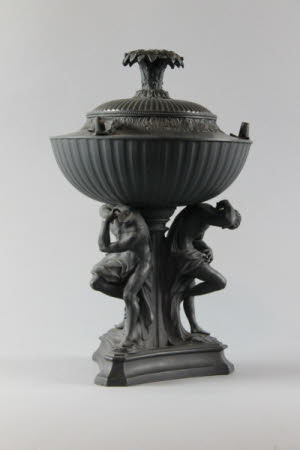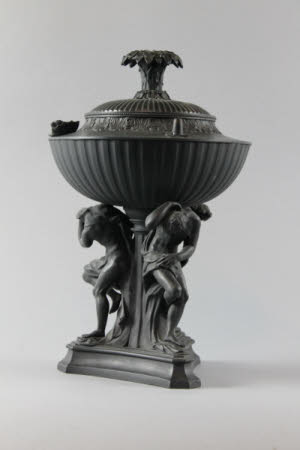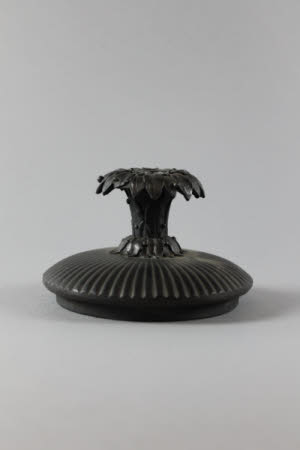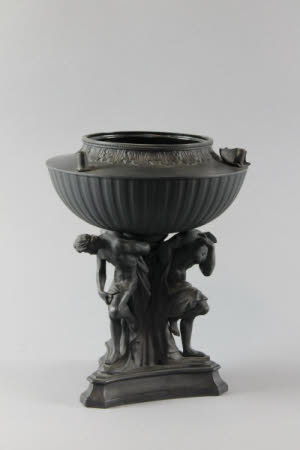Michaelangelo Lamp
Wedgwood
Category
Ceramics
Date
circa 1772
Materials
Black Basalt
Measurements
14.125 in (h)
Place of origin
Etruria
Order this imageCollection
Vyne Estate, Hampshire
NT 718619
Summary
Lamp, known as the 'Michaelangelo' oil lamp, one of a pair, black basalt (stoneware), Shape no.180 of compressed vase shape based on a Hellenistic bronze lamp, c.400 BC. The shoulder with six oil burners in shells beneath an acanthus band, engine-turned, supported on three 'Persians' (male caryatids) raised on a tripartite base. Unmarked, Wedgwood, c.1772.
Full description
The 'Michelangelo Lamp', introduced by Wedgwood around 1772 was indirectly based upon figures from a silver-gilt crucifix by Antonio Gentile de Faenza 1531-1609) c.1582, which had been cast from models by Michelangelo Antonoio Buonarrotti (1475-1564) and in the 18th Century believed to have been made by Michelangelo. However, it is more likely that Wedgwood copied John Flaxman's casts made by copying WIlliam Chambers' drawings in A Treatise of Civil Architecture (London, 1759) where the design was attributed to Michelangelo and had been produced for Matthew Boulton's 'Geographical' clock. There are similar pairs at Saltram (NT 870771) and Stourhead (NT 730552) as well as the Wedgwood Museum Collection.
Makers and roles
Wedgwood, manufacturer after Michelangelo Buonarroti ( Caprese Michelangelo 1475 - Rome 1564) , sculptor after John Flaxman (York 1755 - London 1826), sculptor after Sir William Chambers Kt (Göteborg 1723 - London 1796) , draughtsman
References
Montagu 1954: Jennifer Montagu, ‘A Renaissance Work Copied by Wedgwood’, Journal of the Warburg & Courtauld Institute, Vol 17, 1954. 380-81. Reilly 1989: Robin Reilly, Wedgwood (2 vols. London, 1989), Plate 678




